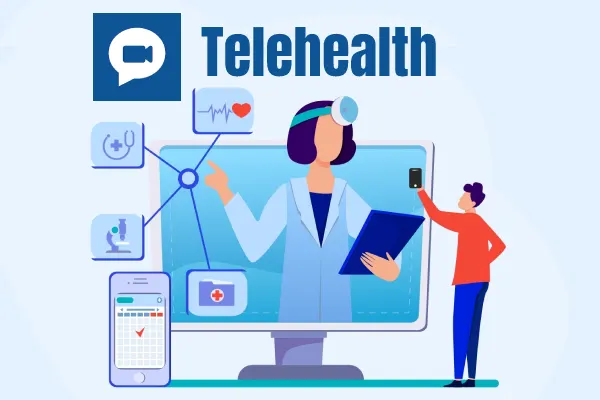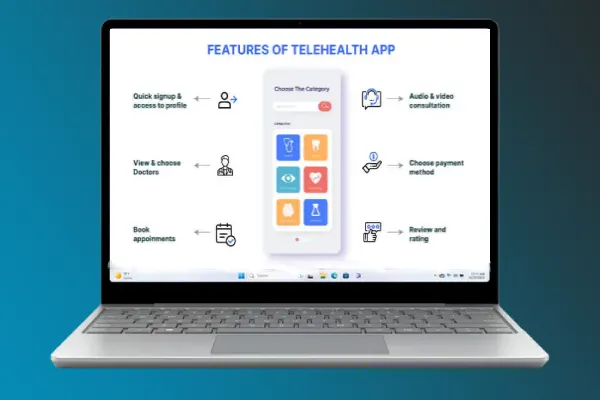Telehealth has revolutionized the healthcare industry, providing convenient and efficient access to medical consultations from the comfort of your home. With the rise of remote healthcare services, it is crucial to have a reliable telehealth app that functions seamlessly on your devices. This article will guide you on how to use telehealth apps on Windows 8, 10, and 11, offering an overview of the app’s features, system requirements, and more.

Introduction to Telehealth Apps on Windows
Telehealth apps enable users to consult with healthcare professionals via video calls, messages, and even remote monitoring of vital signs. Windows 8, 10, and 11 users can access these apps on their computers, offering a wide range of healthcare services without having to visit the doctor’s office in person. Whether for general consultations, mental health services, or specialist appointments, these apps ensure a smooth and accessible healthcare experience.
As the demand for remote healthcare services increases, telehealth apps have been optimized to work across various operating systems, including Windows 8, 10, and 11. Let’s take a deeper look at how to download and use these apps on your Windows device.
Downloading the Telehealth App on Windows 8/10/11
Downloading a telehealth app on your Windows device is a straightforward process. Here are the steps to get started:
- Search for the App: Open the Microsoft Store on your Windows device. You can do this by clicking the Start menu and selecting the Microsoft Store icon.
- Find the Telehealth App: Use the search bar to find the specific telehealth app you wish to install. Popular telehealth apps include Doctor on Demand, Amwell, and Teladoc.
- Install the App: Once you’ve selected the app, click the “Get” or “Install” button to begin the download process. The app will automatically install on your system.
- Launch the App: After the app has finished installing, click “Launch” to open it. You may be prompted to log in or create an account to access its services.
- Set Up Your Profile: Once logged in, set up your personal profile with necessary medical information and preferences for virtual consultations.
Features of Telehealth Apps
Telehealth apps are designed to provide users with a seamless and comprehensive healthcare experience. Some of the most prominent features include:
1. Virtual Consultations
With telehealth apps, you can schedule and attend virtual consultations with doctors, specialists, or mental health professionals. These consultations typically happen via video calls, allowing for face-to-face interaction.
2. Prescription Services
Many telehealth apps provide prescription services, allowing doctors to prescribe medication electronically after consultations. These prescriptions can be sent directly to pharmacies.
3. Medical Records Management
Telehealth apps allow users to upload and store medical records securely. This feature enables healthcare professionals to review your history before consultations, ensuring more informed decisions during appointments.
4. Remote Monitoring of Health Data
Some telehealth apps come with features that allow users to track their vital signs, such as blood pressure, heart rate, and glucose levels. This data can be shared with your healthcare provider for ongoing monitoring.
5. 24/7 Access to Medical Services
Telehealth apps often provide round-the-clock access to healthcare professionals, making it easier for users to get help in emergencies or outside regular office hours.

System Requirements for Telehealth Apps on Windows 8/10/11
To ensure the best experience with your telehealth app, your Windows device should meet certain system requirements. These typically include:
- Operating System: Windows 8, 10, or 11
- Processor: Minimum 1.6 GHz processor (preferably multi-core)
- RAM: At least 4 GB of RAM
- Storage: 100 MB of available storage space or more
- Internet Connection: A stable internet connection, preferably 4 Mbps download speed or higher for smooth video calls
- Webcam and Microphone: A built-in or external webcam and microphone are necessary for video consultations
Frequently Asked Questions (FAQ)
Q1: Can I use telehealth apps on Windows 8, 10, and 11?
Yes, most telehealth apps are compatible with Windows 8, 10, and 11. Ensure your system meets the minimum requirements to guarantee the app runs smoothly.
Q2: Are telehealth consultations secure?
Telehealth apps use encryption and other security protocols to protect your personal and medical data. However, it’s essential to choose an app that complies with healthcare regulations, such as HIPAA in the United States.
Q3: Can I use telehealth apps for mental health services?
Yes, many telehealth apps offer mental health services, including virtual therapy sessions, mental health check-ins, and counseling.
Q4: Do I need to pay for telehealth consultations?
Most telehealth apps offer paid services, but some may provide free consultations for basic health inquiries. Payment details are typically required for in-depth services or prescriptions.
Final Thoughts
Telehealth apps offer a convenient and efficient way to access healthcare services remotely. Whether you’re using a Windows 8, 10, or 11 device, these apps ensure you can consult with healthcare professionals from anywhere. By following the easy download steps and understanding the app’s features and system requirements, you can enjoy a seamless healthcare experience on your computer.
With their array of services, including virtual consultations, prescription refills, and health monitoring, telehealth apps are becoming an essential tool for modern healthcare. Make sure to select an app that suits your needs and enjoy the benefits of accessible healthcare at your fingertips.
